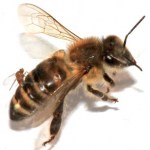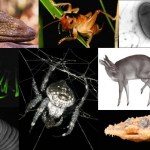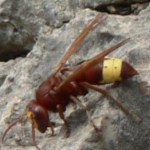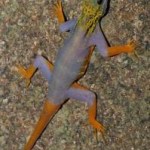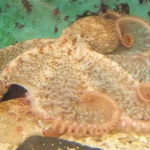Life Science
At Texas A&M University, researchers are testing a new treatment for bone cancer (osteosarcoma) in dogs that may one day help to treat similar cases of osteosarcoma in children. The new technique involves injecting radioisotopes directly in the tumor by drilling tiny holes into the bone with a very tiny drill that is approximately "the size of two human hairs". This helps to target the radioactivity to cancerous cells while protecting healthy tissues.
Osteosarcoma affects about 10,000 dogs and 500 children under the age of 15 each year. Stan Hearns is the President and CEO of Valco…
Fruit flies (Drosophila melanogaster) are actually used frequently in genetics research. They are a popular model organism because they reproduce very quickly and, since their genome is known, researchers can quickly study the effects of manipulating gene sequences (among other reasons).
Researchers have now been able to map the fruit fly genome three-dimensionally which is anticipated to further advance genetics research as researchers will be able to study whether the genome structure can influence the function of genes. You can read the full story here.
I really love fishing! I can't think of a more relaxing time than sitting by the lake, or a more exciting time than going deep sea fishing. Therefore, I find animals that have come up with unique ways of catching fish pretty interesting. Take for example the humpback whales that we talked about in a previous blog. These animals actually create bubble-barriers around schools of fish to keep their meal in one spot.
It turns out that bottlenose dolphins also have a unique strategy. They use sand. By hitting the ocean floor with their tails, they create clouds of sand that act as barriers around…
Researchers have discovered that dolphins might be able to learn a new language! Four captive bottlenose dolphins in Port-Saint-Pere, France have repeatedly heard recorded whale sounds during their various performances at the aquatic park. When researchers recorded the dolphins talking in their sleep, they found that the animals actually made whale-like noises as opposed to dolphin sounds. It was suggested that the dolphins might actually be practicing their performances during their sleep and might have the ability to learn a new language if studies can confirm that the sounds are in fact…
A reader asked if there was an herb equivalent to catnip for dogs. In my search for the answer to that question, I came across many articles claiming that although some dogs will actually respond to catnip, aniseed is to dogs what catnip is to cats. Foxhounds will reportedly follow the scent of anise oil in drag hunting and the artificial rabbit that greyhound dogs chase during racing is laced with anise oil.
Although I could not find a peer-reviewed source of information on this topic, there are many anise-flavored doggy treat recipes and products online, which apparently freshen their…
Just in case you have not yet had a chance to see this video of a murmuration (a flock of starlings) showing thousands of the birds and their impressive ability to coordinate flight, here it is. I can see why it went viral, it really is a must-see:
Murmuration from Sophie Windsor Clive on Vimeo.
If you are a blue-footed booby, the answer is yes. Female blue-footed boobies find males with bright-blue feet pretty sexy. The problem is repeated mating comes with diminished foot color and attractiveness as the males get older. What is a male with dull feet to do? Apparently the solution is easy. All they have to do is skip a breeding season and their feet become brighter again the following season.
What could contribute to the diminished color with breeding? Males boobies are actually attentive fathers and actively participate in raising their offspring. Therefore, researchers think this…
I just finished reading an interesting article from The Scientist on what makes catnip so addicting to our feline friends. In our house, we refer to it as "kitty pot" because our cat just can't seem to get enough of the stuff. One sniff and he is rubbing all over the plant and then does a few laps around the house. This is impressive because outside of a catnip "high", he can usually be found doing only one of two things: sleeping or eating...often sleeping with his head in the food bowl just in case dinner magically makes an appearance, again.
It turns out that catnip is a member of the…
Scientists exploring newly discovered deep-sea vents in the Antarctic have also discovered new species of hairy-chested yeti crabs (the "hair" being from bacteria), anemones, and predatory seven-armed sea stars. Many of these animals have never been seen before at hydrothermal vents explored in other oceans.
Video from a remotely operated vehicle (ROV) exploring the first deep-sea vents found in Antarctica.
Credit: NERC ChEsSo Consortium
There is a new suspect thought to contribute to the demise of honeybee (Apis mellifera) colonies worldwide, termed colony collapse disorder (CCD).
Until now, scientists have identified a host of potential culprits including pesticides that might weaken their immune systems, pathogens, parasites, and malnutrition from poor nutritional sources:
Watch Silence of the Bees on PBS. See more from Nature.
Another potential culprit is a virus found in nearly all the CCD hives examined by researchers in prior studies called Israeli acute paralysis virus (IAPV):
Watch Silence of the Bees on…
Dr. Nicholas Grahame and colleagues at Indiana University-Purdue University in Indianapolis have selectively bred mice that prefer drinking alcohol and apparently binge drink. Until now, other mice would choose water over alcohol. These inebriated mice are the first model of severe human alcoholism that not only models the blood alcohol levels, but also the behavior. Researchers are using these mice to try to understand the mechanisms driving the mice to drink and the pathology of alcoholism in the brain. The goal is to develop therapies to treat alcoholism in humans.
It is a good thing…
This is an exciting day for a comparative physiologist! I just received word from a reader that the top 10 newly discovered species of 2011 have been chosen. This is an annual "contest" put on by the International Institute for Species Exploration at Arizona State University along with an international committee of taxonomists.
The winners, in no particular order, are:
1. Darwin's Bark Spider (Caerostris darwini) that weaves orb webs large enough to span rivers:
2. Bioluminescent mushroom (Mycena luxaeterna):
3. Titanic-eating bacterium (Halomonas titanicae)...literally bacteria that are…
See the amazing symbiotic relationship that has evolved between jellyfish and algae. This relationship began 12,000 years ago when ocean levels were higher as a result of melting glaciers. With the higher ocean levels, creatures like the golden jellyfish trickled into an island lake. As the ocean levels dropped, the jellyfish became trapped and evolved a symbiotic relationship with algae that require sunlight for energy and, in turn, produce sugar that feeds the jellyfish.
Because of the lack of predators, these jellyfish are now "stingless" and people from around the world travel to…
In the search for energy efficient animals, I came across this neat little bug, the Oriental hornet (Vespa orientalis) that can apparently derive energy from the sun. These bugs will actually work their hardest when the sun is at its peak, which is in contrast to similar species that work hardest in the morning when it is cool. Researchers have long known that if you shine light on them, an electrical current is generated across their exoskeleton. This means that their exoskeleton acts like a solar panel since it can convert light energy into an electrical current. Last year, researchers…
More than 200 new species have been discovered since last year in Greater Mekong region. My new favorite is the snub-nosed monkey that looks like Elvis.
A researcher studying the evolution of laughter has observed that things that make us laugh, like tickling our feet, also make our ape relatives giggle like children:
To hear the gorilla better, watch this more recent video:
Here is a YouTube video of a chimpanzee at the Chimfunshi Wildlife Orphanage in Zambia giggling when being tickled:
Does it get much cuter than that?
Image Credit: Animal Planet
Researchers have discovered that the reason chimpanzees eat certain foods may have nothing to do with having a sophisticated palate, but rather, the animals appear to be self-medicating. I suppose if you were a chimpanzee it would be difficult to find a doctor to treat your most recent parasitic infection. The ability to know what foods to eat for specific medicinal benefits may be a learned behavior.
Other animals are known to self-medicate as well, but chimpanzees and humans are the most notorious. Personally, I like to self-medicate with chocolate...and coffee…
The Smithsonian National Zoo needs your help naming this young giant Pacific octopus:
Image Credit: Tamie DeWitt, Smithsonian's National Zoo
The deadline for submitting entries is December 12th at 5pm. The caveat: to suggest a name, you must be a child between the ages of 5 and 15 years. If you (or your children) qualify, you can send your proposed name and an explanation (300 words maximum) of why they should choose that name to the Washington Post's KidsPost (kidspost@washpost.com). Be sure to include the word "octopus" in the subject line of your message. For details and to see more…
Was anyone able to see the special on Nova "The Incredible Journey of the Butterflies" that aired yesterday? Talk about long-distance migration! Every year, over 100 million newly hatched monarch butterflies travel from southern Canada and the northeastern United States ~2000 miles on a 2 month journey to a single mountain range in Mexico. It is unknown how many survive the perils of the migration or how they know where to go. When researchers moved the butterflies to a new starting point, the butterflies were able to alter their trajectory and still make it to their destination.…
In a global effort to understand whale communication, researchers have created a website asking people from around the world to match songs recorded from pilot and killer whales. The songs were recorded using suction-cup sensors that not only record the tagged animal's songs, but also those of neighboring whales. Other questions on the website include distinguishing potential differences in the songs of short- and long-finned pilot whales and whether human sonar transmissions affect whale songs. This project is sponsored by Scientific American, Zooniverse, WHOI, TNO, University of Oxford,…



